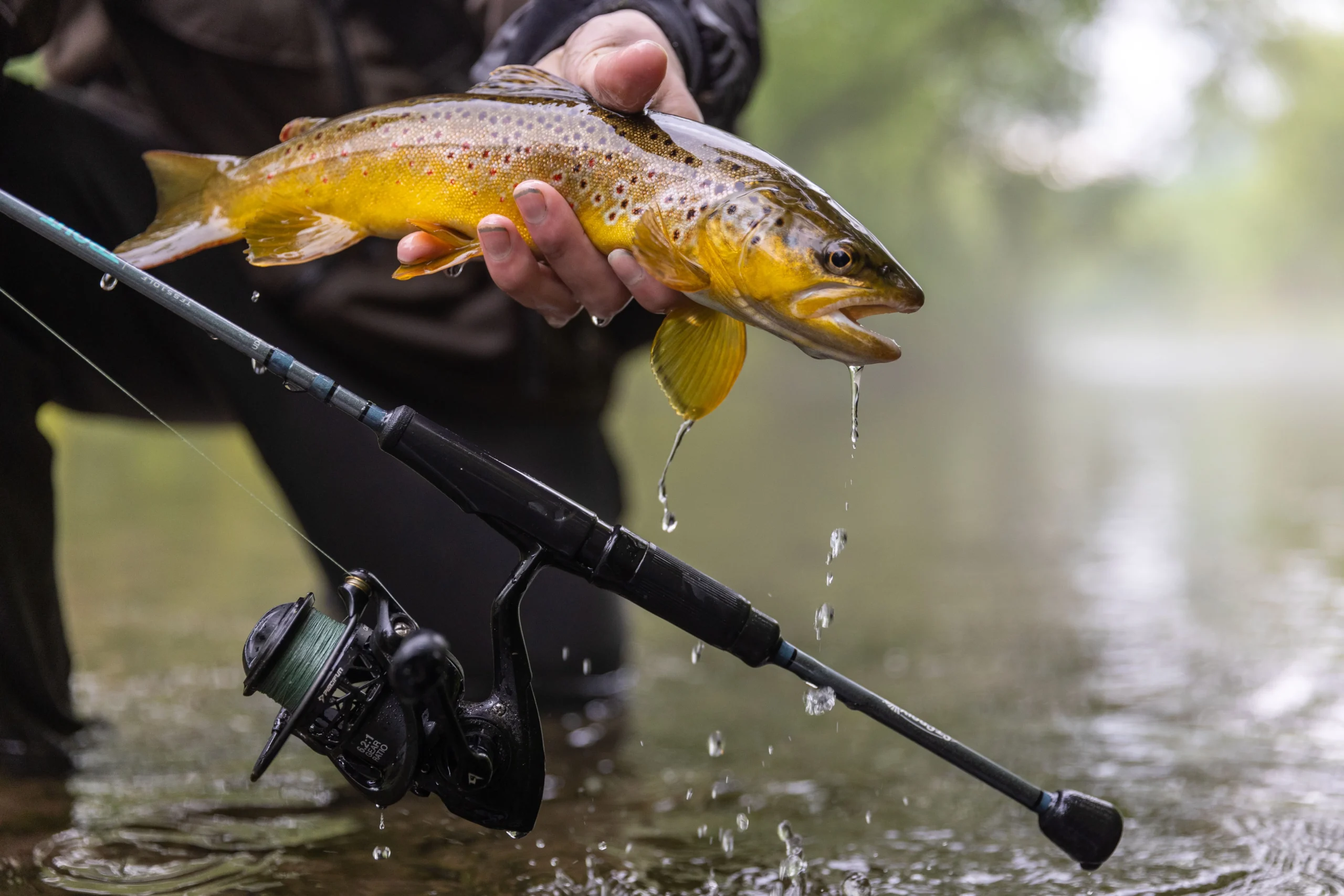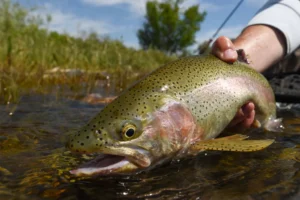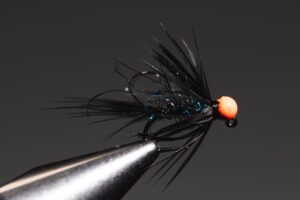Fishing for trout can be one of the most rewarding freshwater angling experiences—but your success often hinges on using the right gear, especially your fishing rod. With so many rods on the market, selecting the right one for trout fishing can feel overwhelming. This guide breaks down exactly what to look for so you can fish smarter and hook more trout.
1. Rod Length: Balance Distance and Precision
Rod length plays a critical role in casting distance, control, and how you fight the fish. For most trout fishing scenarios:
- 6 to 7 feet is ideal for small to medium streams where short, accurate casts are key.
- 7 to 9 feet is better for larger rivers or lake fishing where longer casts are needed.
A shorter rod gives you better control in tight quarters, while a longer rod helps cover more water and maintain line control in current.
2. Rod Power: Go Light or Ultra-Light
Rod “power” refers to how much force it takes to bend the rod. For trout, you typically want:
- Ultra-light power for small streams, light lines (2–6 lb test), and finesse presentations.
- Light power for slightly larger waters or bigger trout.
Using a rod that’s too heavy can make trout fishing less sensitive and reduce your ability to feel soft bites.
3. Rod Action: Fast is Best
“Action” refers to how much of the rod bends when pressure is applied:
- Fast action rods bend mostly near the tip. They offer better sensitivity and quicker hook sets, ideal for detecting subtle trout bites.
- Moderate action rods bend more throughout the blank and are better for casting lightweight lures farther with less accuracy.
For most trout applications, fast action gives you the edge in sensitivity and hook-setting.
4. Material: Graphite or Composite
Rod material affects sensitivity, weight, and strength. Here’s the breakdown:
- Graphite rods are lightweight and highly sensitive—perfect for feeling light trout bites.
- Fiberglass rods are more durable but less sensitive and heavier—better for kids or rough handling.
- Composite rods (graphite + fiberglass) give you a mix of sensitivity and toughness.
For serious trout anglers, a graphite rod is typically the top choice.
5. Spinning vs. Fly Rods
Decide which type of fishing you’ll do most:
- Spinning rods are the most versatile and beginner-friendly. Ideal for casting bait, spinners, and small lures.
- Fly rods are specialized tools for fly fishing, requiring a different casting technique and setup.
If you’re new to trout fishing, start with a light or ultra-light spinning setup before diving into fly fishing.
6. Handle Type and Comfort
Trout fishing often involves casting for hours, so comfort matters. Most trout rods feature:
- Cork handles, which are lightweight and offer a classic feel and good grip even when wet.
- EVA foam handles, which are more durable and better for harsh conditions but less sensitive than cork.
Try out both types if possible and go with what feels best in your hand.
Recommended Specs for Trout Rod:
- Length: 6’6″ to 7’6″
- Power: Light or Ultra-light
- Action: Fast
- Material: Graphite
- Type: Spinning rod (unless you’re fly fishing)
Final Thoughts
Choosing the right fishing rod for trout doesn’t have to be complicated. Focus on your fishing environment, the size of trout you’re targeting, and how you plan to fish. Match your rod to the conditions, and you’ll dramatically improve your success and enjoyment on the water.
Whether you’re casting spinners in a mountain stream or drifting bait in a wide river, the right trout rod makes all the difference.








